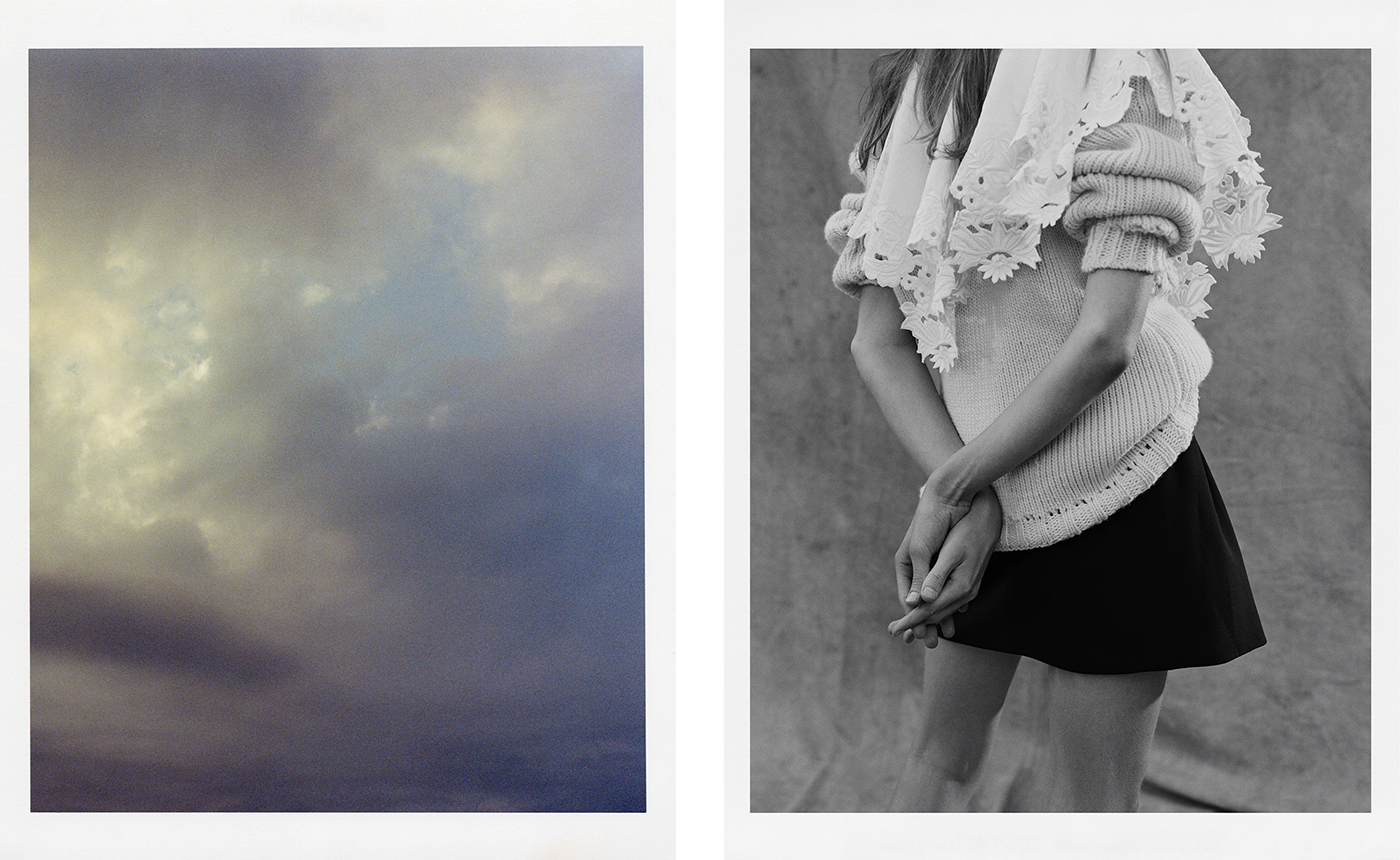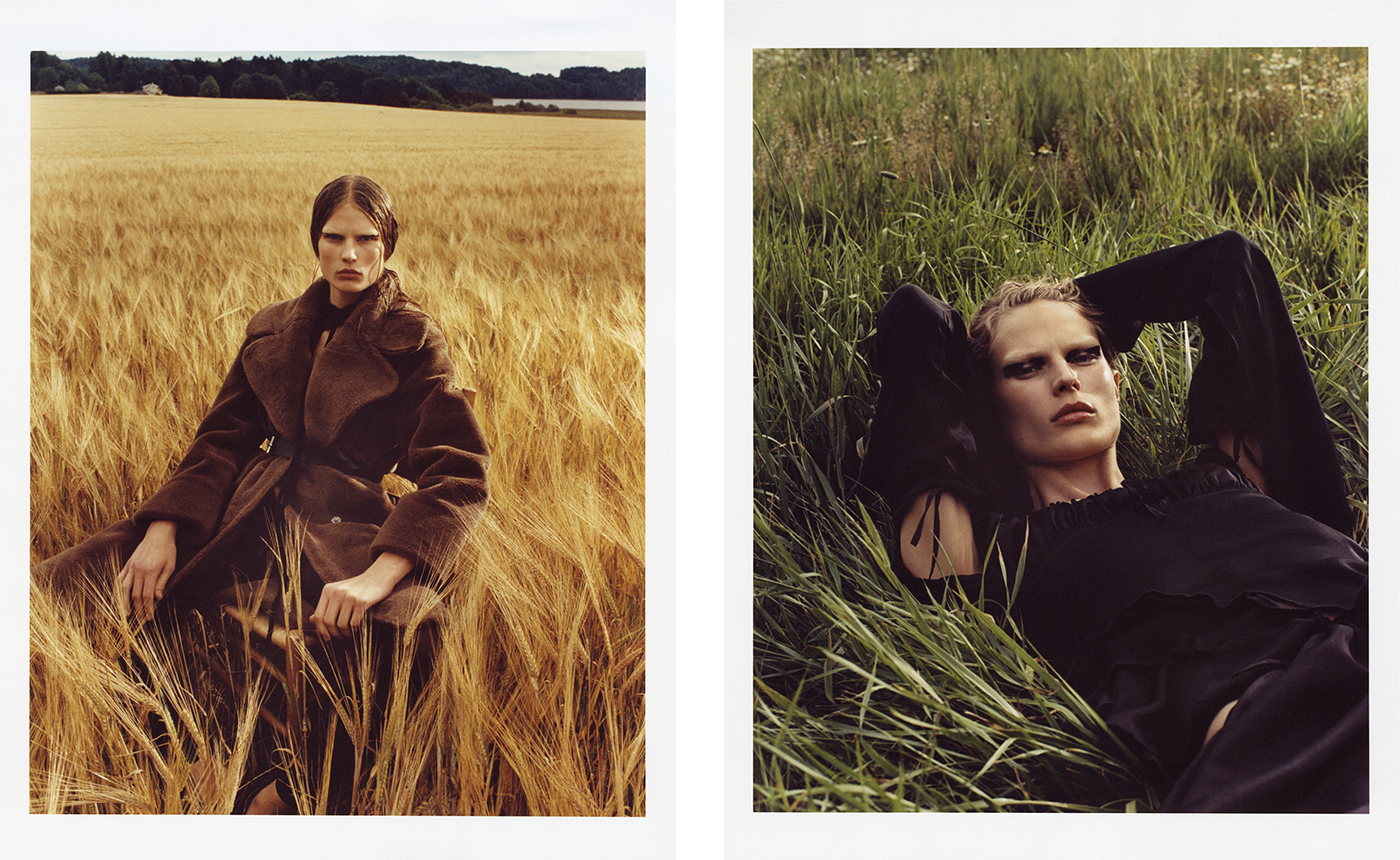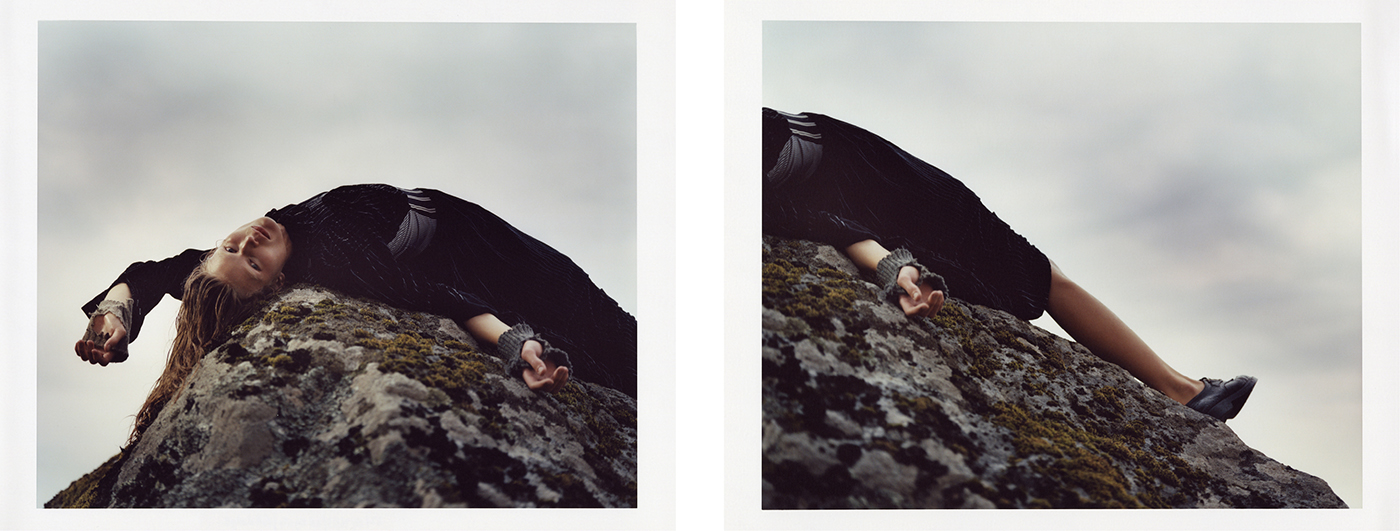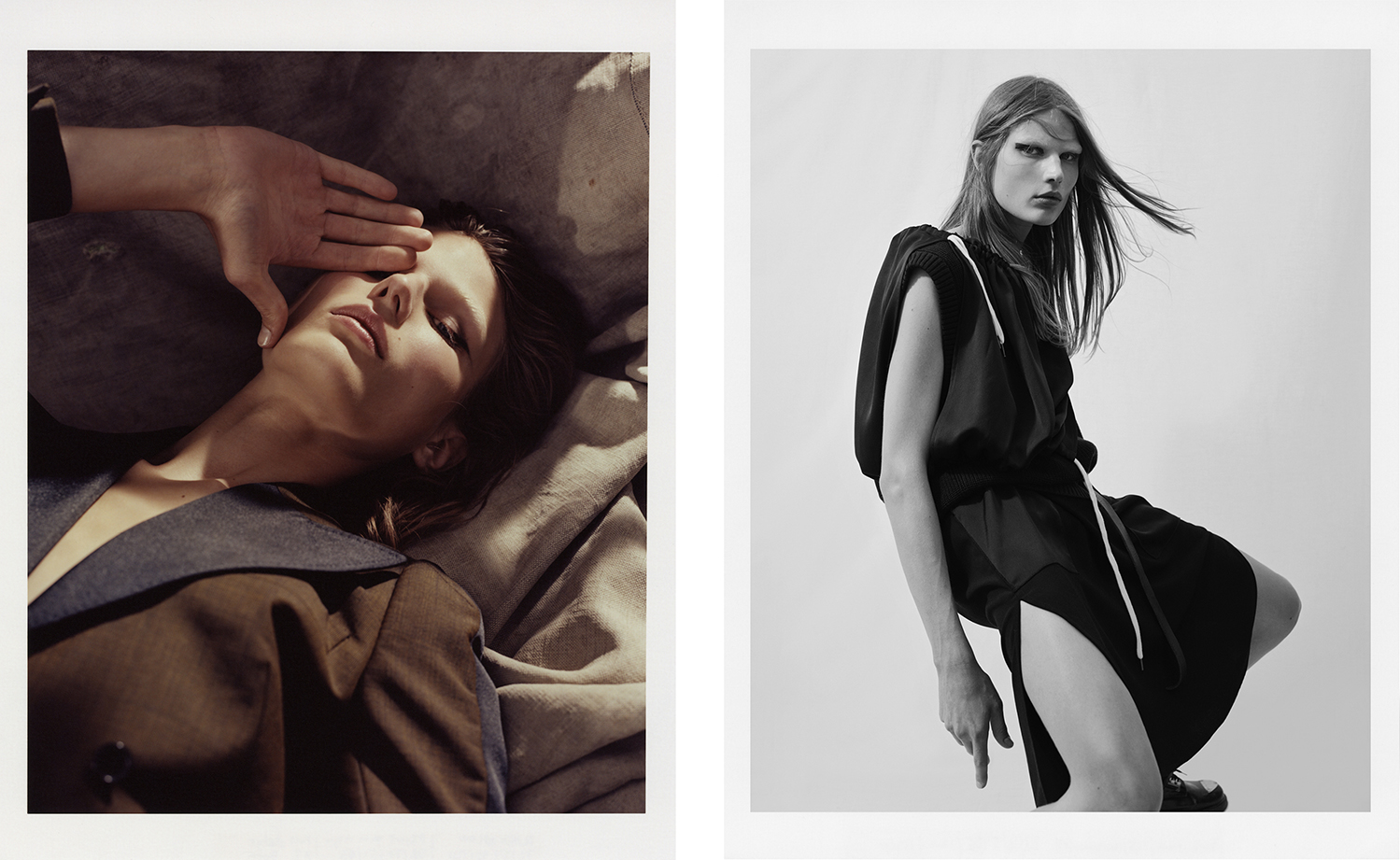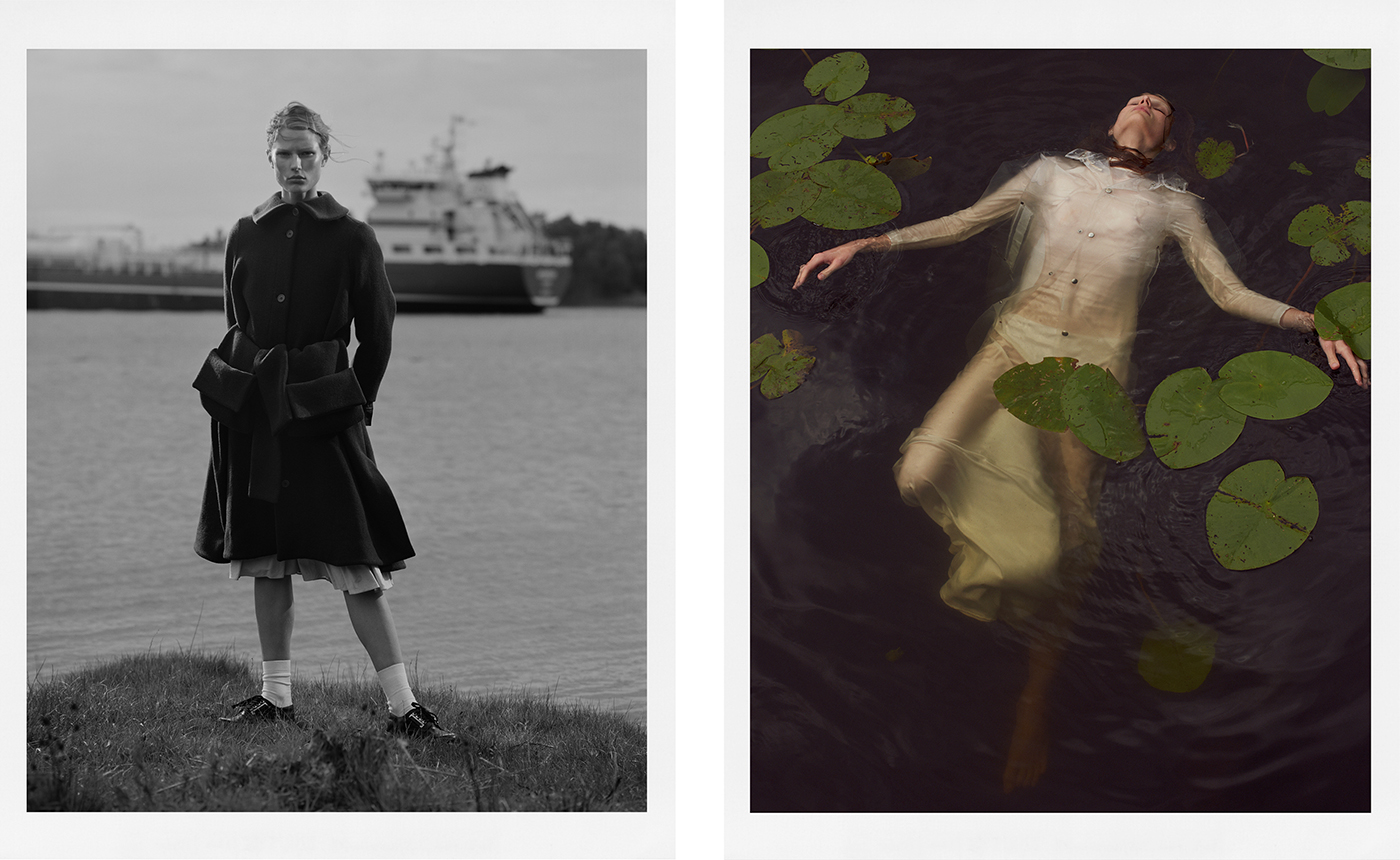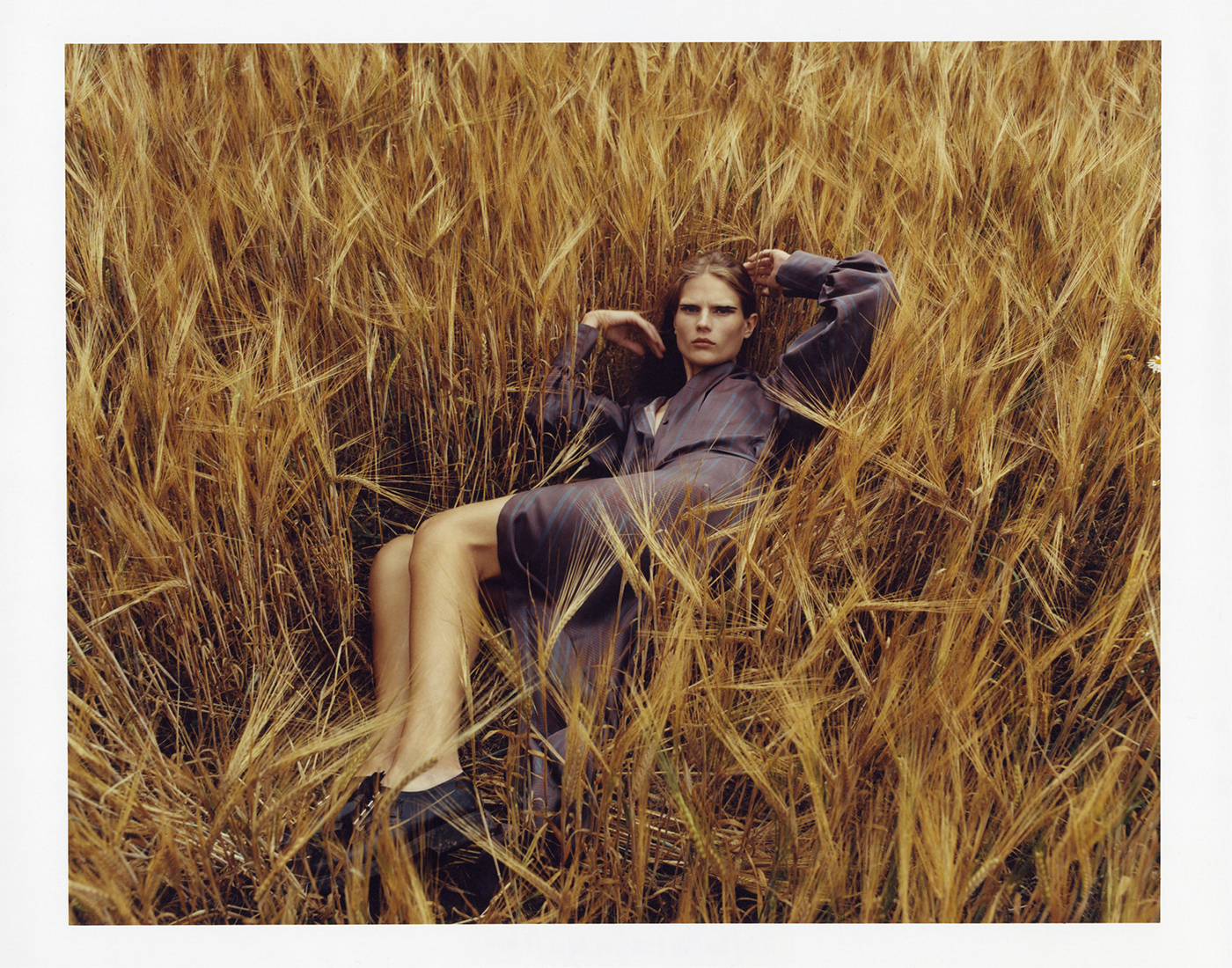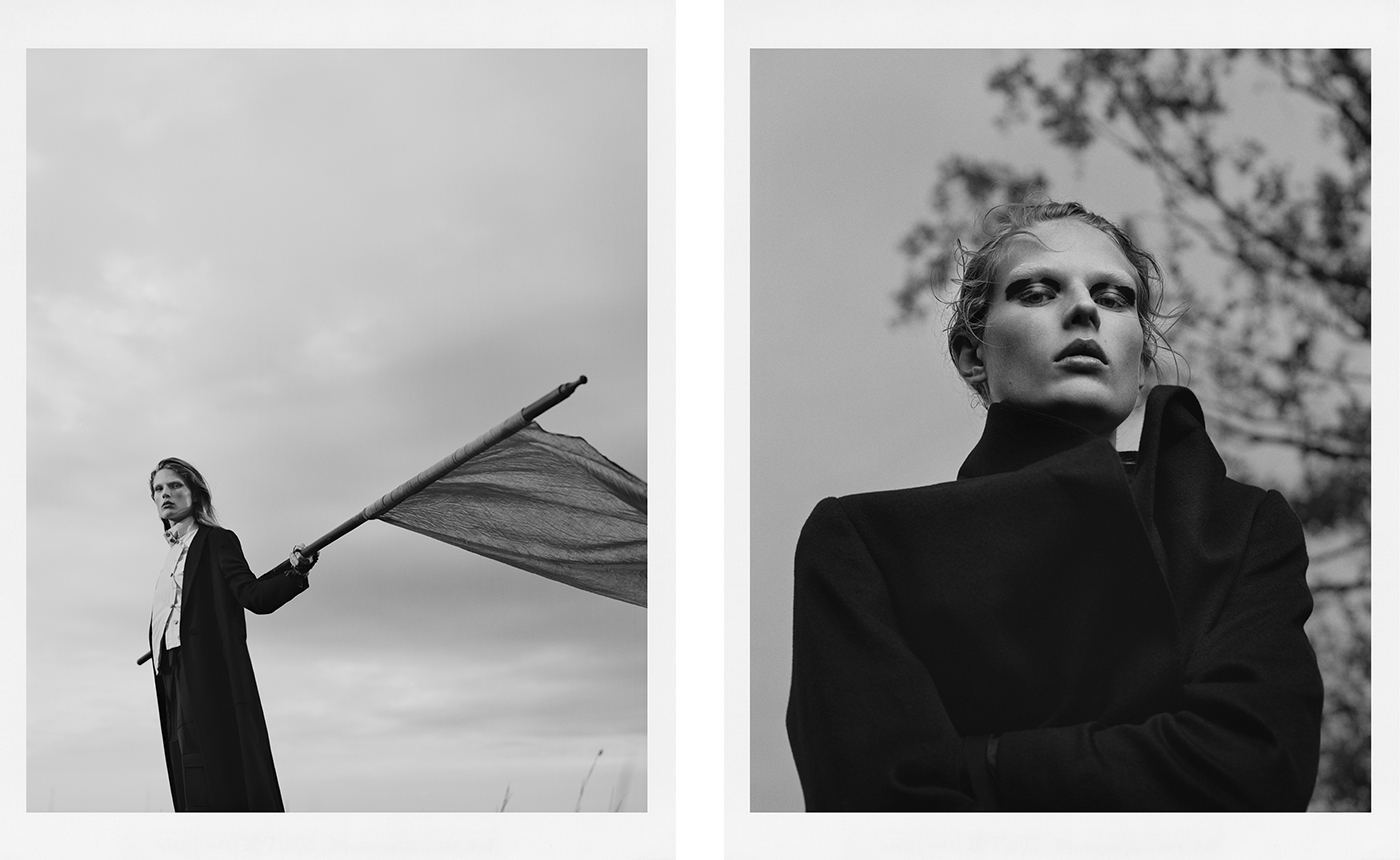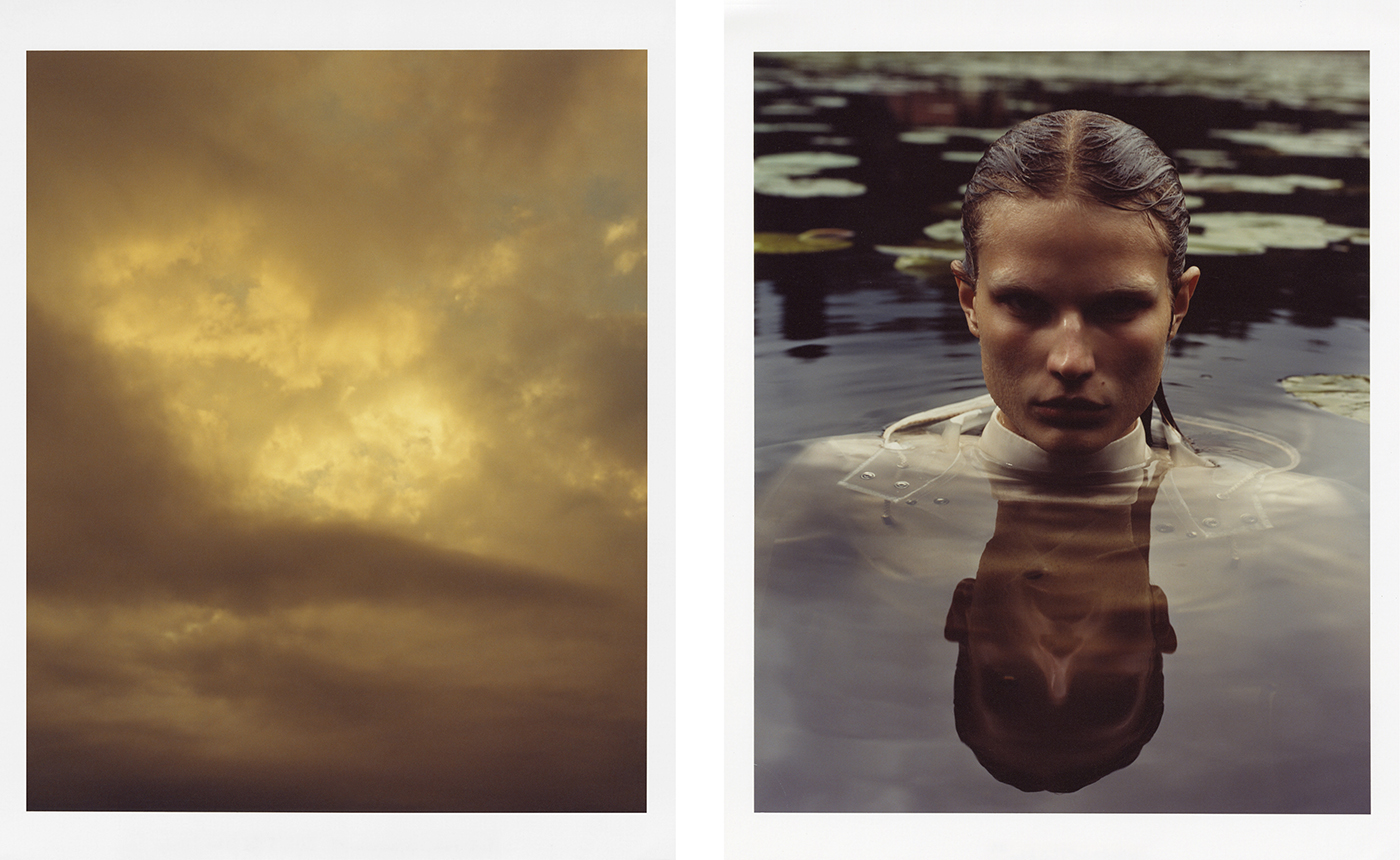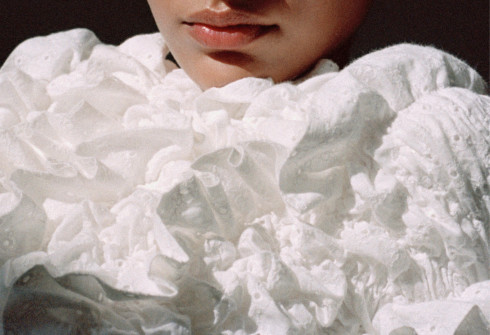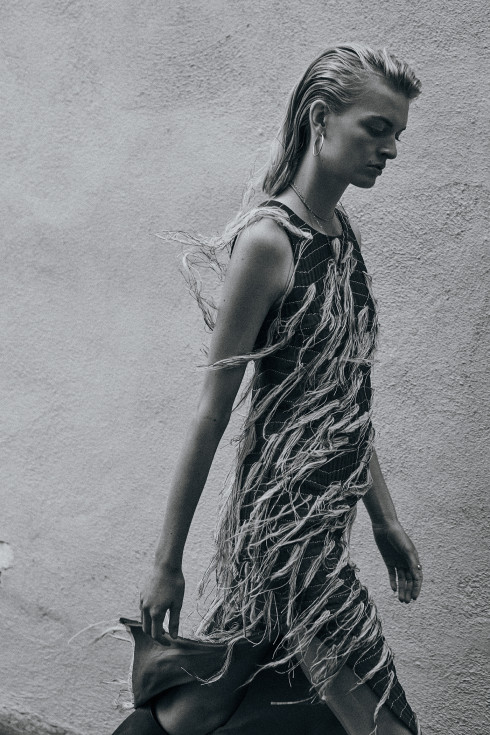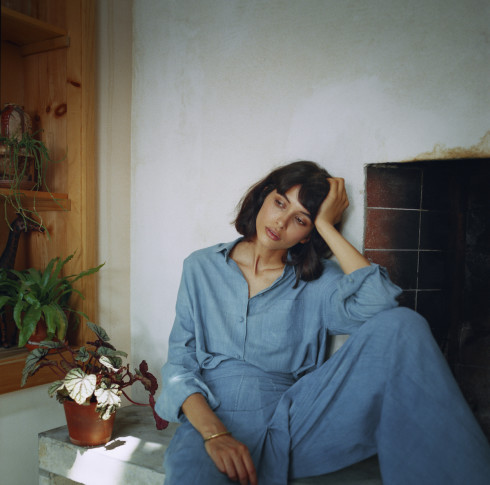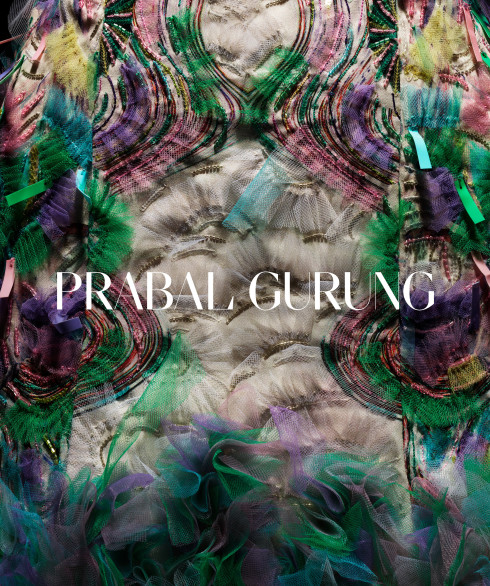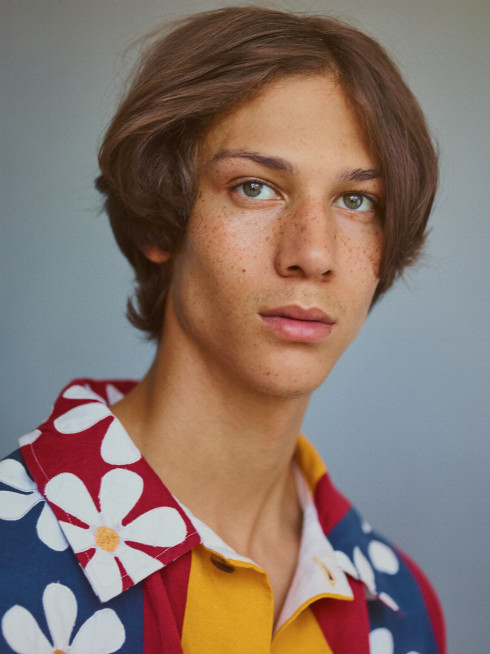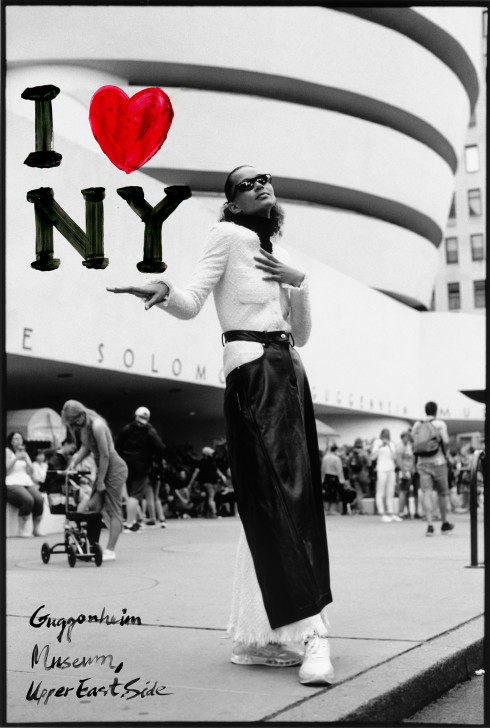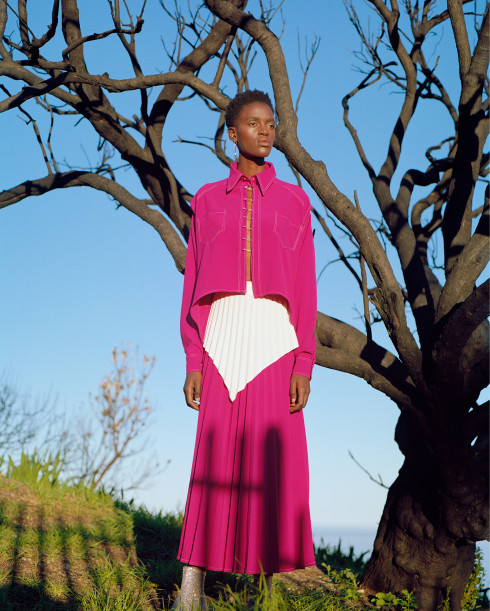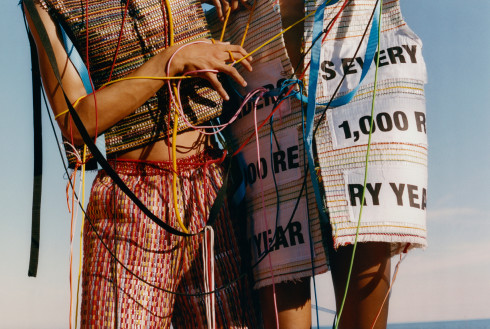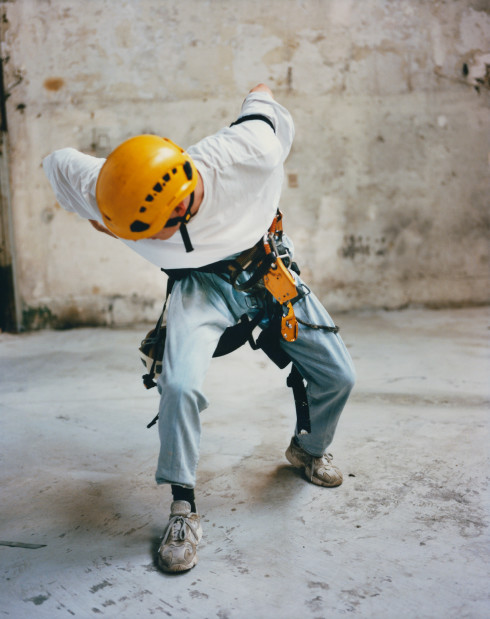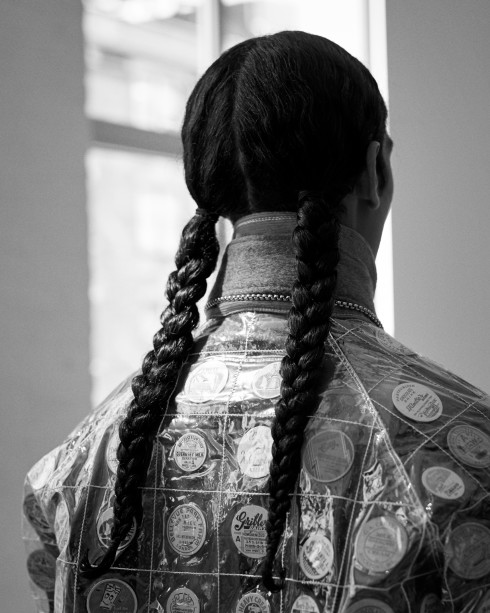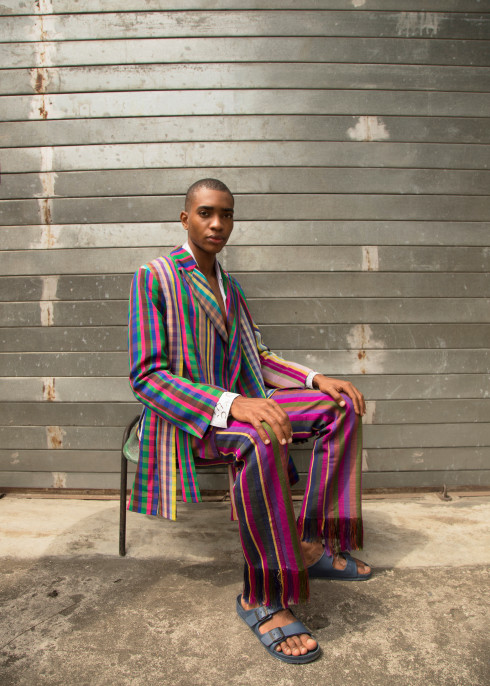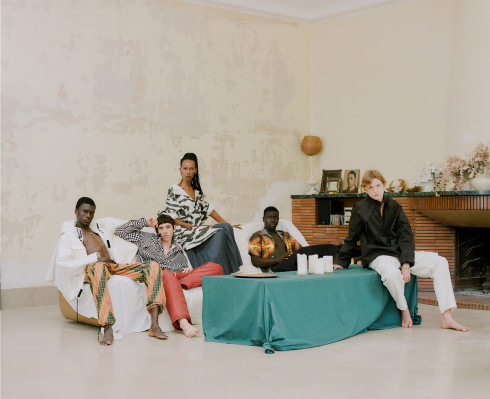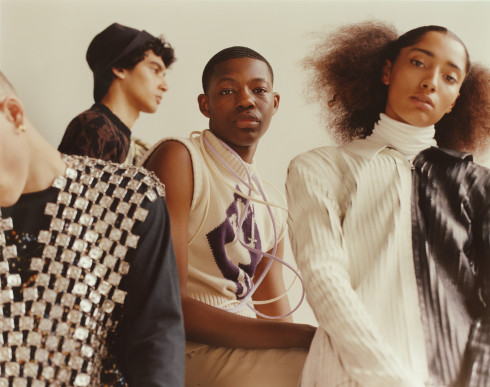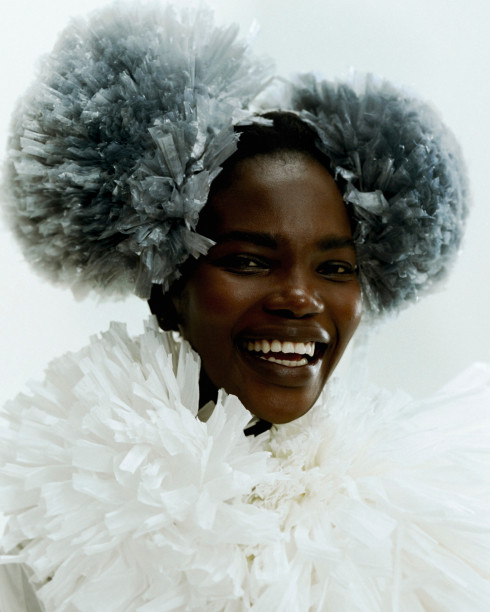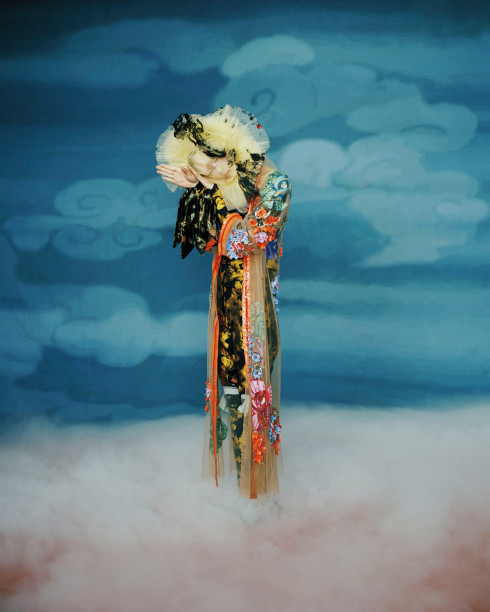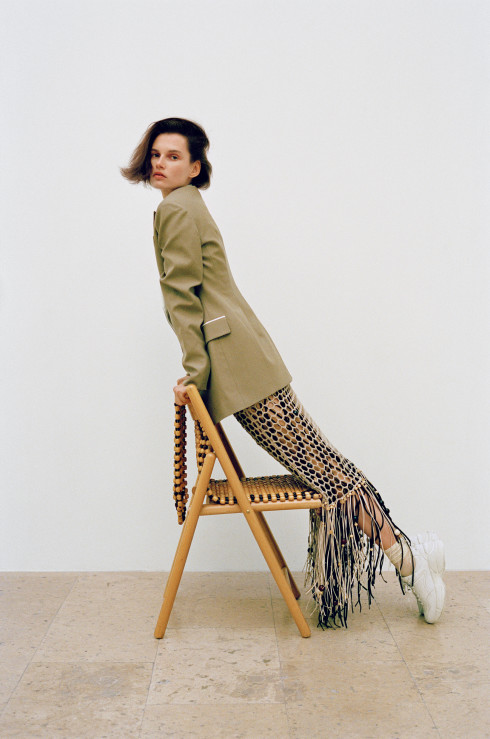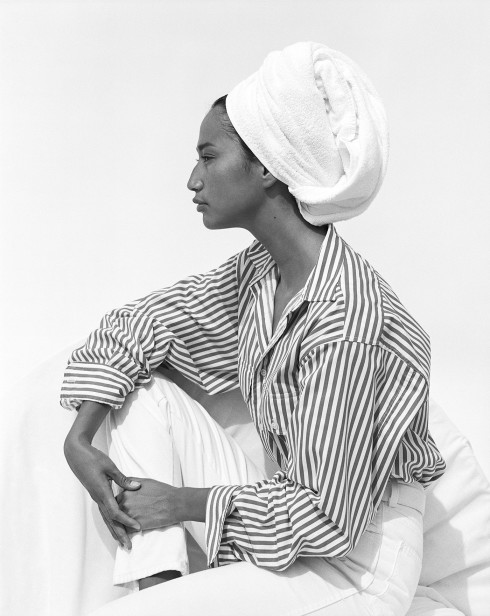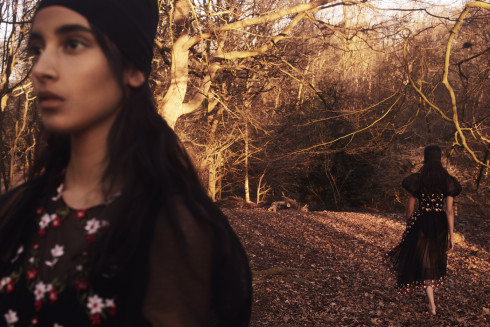
- Photography by
- Bjarne x Takata
- Styling by
- Oscar Lange
Model: Adela Stenberg at Stockholmsgruppen. Hair by Erika Svedjevik at LinkDetails. Makeup by Ignacio Alonso at LinkDetails. Stylist’s assistant: Sara Möller. Casting by Åsa Karyd.
SCANDINAVIAN SILHOUETTE
Scandinavia is a place of contrasts, starting from the endless sunlight of summer and the dark nights of winter. Comprising the countries of Denmark, Norway, Sweden, and Finland on the far northern edge of Europe, the region also features a distinctive cultural and social identity, with some of the happiest populations in the world but also some of the highest suicide rates. This unique mentality has led to a flourishing artistic community, from filmmakers and painters to textile designers and architects. Scandinavian fashion, which has long hewed closely to a largely minimalist æsthetic, has recently begun to expand in surprising new directions, with young designers focusing on craft, sustainability, and the epochal changes effected by the rise of the internet. In a portfolio of some of the region’s most interesting brands, photographer duo Bjarne x Takata and stylist Oscar Lange explore the ways this new crop is reinventing a classic lanaguage for a new age.
Take a look at our previous portfolio of Baltic designers here.
BARBRO SCOTT
Barbro Scott designs and produces imaginative hats for clients with creative interests like herself, mainly other designers, stylists, musicians, and actors. She started her eponymous company in the Eighties, and received technical training in women’s tailoring and sewing in Mariehamn, on Finland’s Åland islands, and Stockholm. She’d later study design, focusing on embroidery, weaving, and chromatics, as well as the history of hatmaking. Scott’s creations are statement pieces, reminiscent of artwork, that have captured the attention of leading fashion publications like Elle and Vogue, as well as appeared in several films and television productions. She also designed hats and dresses for the Royal Dramatic Theatre in Stockholm for over thirty years, while also serving as a visiting apprentice at the Royal Danish Theater in Copenhagen, using materials from traditional fabrics and wool to straw, ribbons, braids, and laces in her inventive designs. She sees beauty in her surroundings and draws on her travels throughout Europe in her work. “My inspiration comes from everything around me,” she says. “Visiting Paris several times has inspired me a lot, but also Italy and England.” —Nicole DeMarco
GIORGI ROSTIASHVILI
Giorgi Rostiashvili is inspired by the mundane. “The ‘everyday’ environment is important [to me] because it is a reality,” explains the Stockholm-based designer. “I love the idea of taking out a silhouette or a radical cut to the street where it belongs. Everything just comes full circle.” To some extent, this vision is informed by Rostiashvili’s background and his perception of fashion as a vehicle for expression. Growing up in post-Soviet Georgia, he explains that this particular milieu had a profound influence on his approach to date, both æsthetically and philosophically speaking.
“I grew up with a view on fashion as a very important everyday tool—as an escape if you will,” he recalls. Looking back, it is clear that his surroundings certainly helped to shape the brand’s æsthetic direction as well. In particular, Rostiashvili says, it was the clash between Soviet remains and the newness of the Nineties that inspired his eventual vision—which explains both the minimalism and the experimentation at work throughout his designs. But, although fashion may have always existed at the back of his mind, Rostiashvili reveals he initially studied art before undertaking a bachelor’s degree in design at the prestigious Royal Danish Academy of Fine Arts.
Since then, it’s become abundantly clear that he chose the right career path. Following an impressive début at Stockholm Fashion Week in August 2015, Rostiashvili has quickly become one of the most talked about new Scandinavian designers. Back then, his designs hinted at an underlying preoccupation with deconstructed tailoring, but today this vision has been whittled even further—establishing a streamlined and architectural point of view. “I wanted to approach [Spring 2017] as a complete wardrobe and create a collection of almost super-worked staple pieces,” the designer explains. “So I wanted to explore a register of staples, created for a hyper [version of] everyday life.” —Rosie Dalton
HAAL
Stockholm-based designer Anders Haal says it was countryside boredom that first gave rise to his creative pursuits. “I had a lot of time on my hands and started doing photography in the basement sauna,” he recalls. “From there, my interest in fashion also grew.” After working on the atelier collection with Ann-Sofie Back for a few years, Haal went on to launch his namesake label in 2014, no small feat in today’s highly competitive market—though the designer puts a lot of his success down to the power of digital storytelling. “Ever since the start I have focused a lot on digital campaigns, as a way to build the [brand’s] identity,” he elaborates. “It has been a natural way for me to approach working with the collections more holistically.”
Like many of his local contemporaries, Haal is inspired by reality—a fact that hints at the inherent wearability of Scandinavian style. But unlike many of his contemporaries, he isn’t too interested in the principles of minimalism or functionality. “I do think we have an ability to adapt what is going on and turn it into something that works. So we are straightforward and to the point,” he says of the label’s modus operandi. But that adaptation is closely linked to real-world influences as well, such as the “party chic” style codes that he tapped for Spring 2017. This would explain the leopard print inclusions throughout, which featured alongside Haal signatures such as terry towel, denim knits, polo shirts, and pleating.
It isn’t just clothing for which Haal is known, either. In fact, the designer is fascinated by the interplay between eyewear and fashion in particular—and so it’s these two categories that comprise his multifaceted brand. It’s a confluence that speaks to the industrial spirit of Haal’s overall æsthetic and allows the designer to experiment with gravity and angles in a way that’s both innovative and accessible. “Eyewear is a great way to change your mood and your approach to the world,” the designer says of balancing these two aspects, “and I personally like the fact that it [offers a] more of an architectural and technical approach [than clothing].” —Rosie Dalton
AALTO
Aalto designer Tuomas Merikoski says he sort of fell into fashion design while searching for the right path to take in his studies, but it is precisely this designer’s sense of being both on the inside track of fashion and also somewhat external to it which makes his label so invigorating. Very much grounded in art and street culture, Aalto manages to transcend the boundaries of just clothing and cross into countercultural territory, all the while drawing upon Merikoski’s impressive career in the industry, of course—during which he has logged time at major houses such as Givenchy and Louis Vuitton.
Frustration with the lack of fashion possibilities in Scandinavia at the time pushed Merikoski to leave Finland for Paris at the turn of the millennium, but it was ironically the very same thing that drew him back to establish Aalto in 2015. “I launched my label because I wanted to do fashion differently, to challenge myself and go back to my origins,” the designer explains. “Finland still has a very interesting culture with its own identity, youth culture, and something crazy and raw. I simply wanted to build a new collection on this idea and to do it internationally.”
It is clear that the nation’s character informs Merikoski’s design principles at Aalto too. Although his background in menswear design and self-described “techy geeky side” can be seen in the label’s striking outerwear, Finland’s staunch sense of equality and proximity to nature are equally present. The perfect case in point here is Aalto’s recent sustainability collaboration with Finnish packaging service RePack, which is known for its recycled yellow packaging sleeves. To highlight this initiative, Merikoski repurposed a series of industrial RePack sleeves into limited-edition handbags for the Aalto Spring 2018 runway in Paris. “Sustainability is something I cherish, but I don’t want to engage in it without [also engaging in] the creative process,” the designer says of the collaboration.
“Online is a natural playground for green thinking, but weirdly the whole online shopping process is still very compromising ecologically,” Meriksoski adds, “so we went looking for solutions.” Of course, this development was all in addition to designing an impeccable collection in the meantime, titled “After Nature.” “The inspiration was drawn from the World Wide Web becoming our second nature, really,” the designer explains. “It implies the fact that humanity’s fingerprint on nature is defining our destiny. It’s a very deep and difficult topic, but I also wanted to add some hope, [which is why] we worked on fun fake logos.” In other words, then, Merikoski is both a thoughtful and an incredibly thought-provoking modern designer—his vision seemingly without limit. —Rosie Dalton
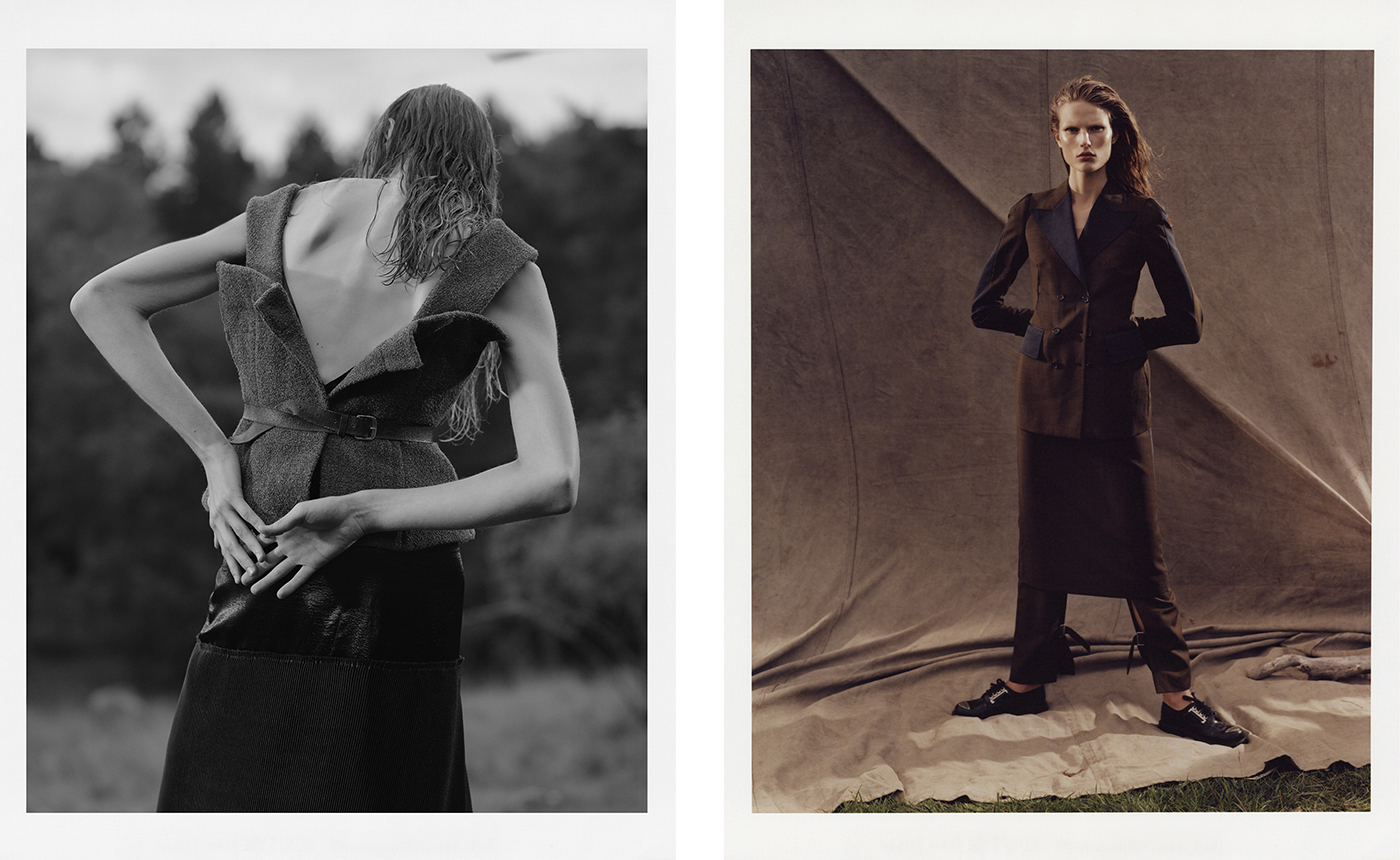
IDA KLAMBORN
“I’m definitely a feminist,” the Swedish designer Ida Klamborn says. “It’s so sane and natural to be, I believe.” And she is unapologetically so in every part of her life—in fact, her Fall 2017 collection is all about owning her femininity. “I looked at myself as a kid, the playful and almost girly æsthetic I loved so much back then,” she explains. “I still do, but somehow you are told that it’s not the most desirable æsthetic.” She ending up creating a collection filled with playful dresses made from vibrant, tactile fabrics. The campaign photos for the collection feature both her grandmother and one of her friends, showing that the clothes could be worn at any age. “It was the perfect match because even though you get old, you don’t lose your personality, your playfulness, your need to feel sensual and so on,” Klamborn says.
Growing up in the south part of Sweden, in a small village outside the city of Lund, Klamborn was always interested in clothing as a way to express herself without words. Cultivating that interest, she went on to study fashion design at the Swedish School of Textiles just outside Gothenburg. It was there where she learned how to grow artistically and practically as a designer. Klamborn describes her designs as a “trinity of color, shape, and material.” When starting a new collection, she always likes to start with the fabric. “Fabrics can tell you so much just by looking and holding them, what kind of silhouette and garment it’s more suitable for,” she explains. Klamborn also likes to design with all the female muses and collaborators in her life in mind. “It’s very important for me to honor these women, my friends and family. It’s kind of a drive for me, to figure out how I can make a garment that will have a positive impact on a woman,” she says. “I love that. I love to dress women.” —Alexandra Sarabia
L’HOMME ROUGE
The founders of L’Homme Rouge got their start designing knit beanies for students in their university city of Lund, Sweden, but the brand has since evolved into a full-fledged contemporary menswear label based in Stockholm. L’Homme Rouge, or the red man, is not merely a design house, but a way of life that’s distinctly Scandinavian. “Every collection has this made-up world. Spring 2018 was inspired by everyday role play. We combined two worlds, the world of dusty old office environments and theater,” John-Ruben Holtback, one of the original founders, explains. “That being said, this specific collection has a completely different muse compared to the previous collection, where we dove into the life of young Swedish harbor workers,” he says, nodding to their coastal roots. L’Homme Rouge’s style embodies an edgy minimalism that’s obviously cool but is inspired by traditional workwear and tailoring on the most basic level. Designer Jonatan Härngren likes to experiment with playful elements and colors to balance out their mostly dark color palette. Fine and fluid textiles in faded and washed-out colors combined with varying silhouettes add up to what Holtback describes as the “silent and poetic look” that has come to define the label. —Nicole DeMarco
MARK KENLY DOMINO TAN
Not many designers can say they have designed for royalty, but Mark Kenly Domino Tan did just that for former Princess Alexandra of Denmark and now Mary, the Crown Princess of Denmark. The designer was never intimidated, however. “It’s not much different actually. Of course, you have to be aware of certain traditions, but I think it’s the same,” he says. “With all atelier pieces we do, it’s a very close collaboration with the customer.” Tan studied at the Kolding School of Design in Denmark and the Royal College of Art in the United Kingdom and also worked for the likes of Balenciaga and Alexander McQueen before starting his own label in 2012 to early fanfare on the Danish fashion circuit.
Inspiration comes in many unexpected forms for the designer, but one grounding element is how individually powerful women look in his clothes. His Fall 2017 collection showed women wearing precisely layered feminine skirts and structured dresses with oversized coats and sweaters in earthy tones and minimal pops of color. For the collection, Tan looked at old pictures of immigrants traveling to the United States in the Thirties and Forties. “It was that whole feel about what you wore and how you packed your best clothes and wore everything on top of each other,” he says. “Maybe it was a coat you inherited from your older brother or father and it was altered in a way to fit the person who wore it.” Tan also champions a more thoughtful production design process, something he believes his peers are now taking more seriously. “I think this next generation of designers in our region has transformed this normality and wearability into something that is a bit more forward-thinking then what we have been doing before,” he explains. “Caring about the product and how it’s produced and manufactured is a very strong thing in general and in particular for our generation of designers.” —Alexandra Sarabia
LAZOSCHMIDL
Josef Lazo and Andreas Schmidl, together Lazoschmidl, are inspired by fiction and they like to imagine that they’re dressing characters on a film set when designing their line. Their label, based in Germany and Sweden, was founded in 2014 as a one-time-only capsule project. However, it achieved instant recognition and progressed into a full collection to be shown during fashion week, and they were awarded the Innovation Prize by the Swedish Fashion Council in 2016. “The first collection was an artistic experiment triggered by a New York mural by Gilbert & George, lifetime partners who continuously evolve their collaborative themes,” Schmidl says. “We wanted to reinterpret this approach to menswear.” This instinct is fitting, considering Lazo studied fashion design at the London College of Fashion, whereas Schmidl focused on German and Japanese literature at Goethe University Frankfurt. Together they blend both the worlds of design and art. Lazoschmidl’s creations are not for the faint of heart, featuring shimmering fabrics, leotards with side cutouts, and hand-embellished showpieces paired with raw denim and classic ribbed t-shirts. The Lazoschmidl man is unabashedly expressive, confident, and creative—much like the young Robert Mapplethorpe or Mick Jagger that the designers imagine wearing their looks. —Nicole DeMarco
- Photography by
- Bjarne x Takata
- Styling by
- Oscar Lange
Model: Adela Stenberg at Stockholmsgruppen. Hair by Erika Svedjevik at LinkDetails. Makeup by Ignacio Alonso at LinkDetails. Stylist’s assistant: Sara Möller. Casting by Åsa Karyd.
